The Louvre is probably the most famous of all art galleries in the world - whilst the Guggenheim is the most widespread. Between them they house some of the finest art from Ancient Egypt to the present day.
The Louvre, in Paris, was originally a fortress, built in the 12th century. It was converted into a royal residence 400 years later and was decorated with many great artworks such as The Mona Lisa.
Following the French Revolution the Louvre became a museum, opening its doors in 1793. Over the following centuries its collection has grown, helped in part by the conquests of Napoleon.
[readmore]
It has many collections devoted to antiquities from different areas (for example Islamic Art) and others to differing arenas, such as sculpture, decorative arts, painting, prints and drawings.
The Solomon R Guggenheim Foundation was set up in 1937 by the philanthropist with whom it shares its name. Its mission is to "promote the understanding and appreciation of art, architecture, and other manifestations of visual culture, primarily of the modern and contemporary periods".
The oldest museum established by the foundation is the Solomon R Guggenheim Museum in New York, which opened in 1939. Others followed in Venice, Manhattan, Bilbao, Las Vegas, Mexico, Berlin and Lithuania. Sadly, only three of these remain open today (New York, Venice and Bilbao) though others are planned for Abu Dhabi and Helsinki.
[/readmore]
For a closer look at the pictures, please click on them to expand.
|
1.
|
On display in the Louvre and dating from Greece around 550 BC, the Rampin Rider is of an unknown figure. Which of the 3 answers below has not been suggested by scholars as its possible identity? 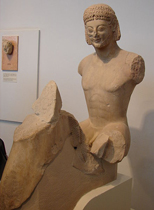
|
|
| [ ] |
The Greek hero Castor |
| [ ] |
The winner of a race |
| [ ] |
The Greek hero Polydeuces |
| [ ] |
King Aegeus of Athens |
|
|
|
2.
|
This is an example of a Fayum portrait, dating back to the first century AD in Roman occupied Egypt. What was the purpose of Fayum portraits? 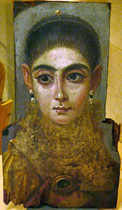
|
|
| [ ] |
To mark the birth of a child |
| [ ] |
As a gift for a bride |
| [ ] |
To cover the face of a mummy |
| [ ] |
As a curtain for windows |
|
|
|
3.
|
Painted by Anthony van Dyck circa 1635, Le Roi à la chasse shows which English king at the hunt? 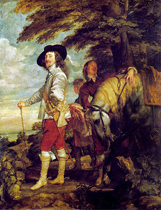
|
|
| [ ] |
James II |
| [ ] |
Charles II |
| [ ] |
James I |
| [ ] |
Charles I |
|
|
|
4.
|
The Lacemaker was painted around 1670 by which Dutch artist? 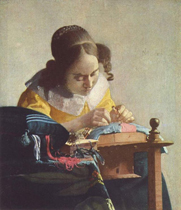
|
|
| [ ] |
Johannes Vermeer |
| [ ] |
Rembrandt |
| [ ] |
Jansz Vermin |
| [ ] |
Salomon Rombouts |
|
|
|
5.
|
Rightly housed in the Louvre in Paris, this painting commemorates the revolution of 1830 which overthrew King Charles X of France. What is its name? 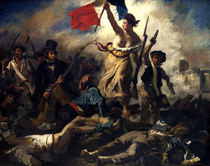
|
|
| [ ] |
Liberty Leading the People |
| [ ] |
The July Revolution |
| [ ] |
Liberty, Equality, Fraternity |
| [ ] |
The Second Revolution |
|
|
|
6.
|
The Guggenheim Museum in Bilbao, Spain, is a work of modern art in itself. It was designed by which Canadian architect? 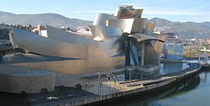
|
|
| [ ] |
William Shatner |
| [ ] |
Étienne Gaboury |
| [ ] |
Albert Schultz |
| [ ] |
Frank Gehry |
|
|
|
7.
|
Painted by German artist Franz Marc in 1911, what is the name of this expressionist painting? 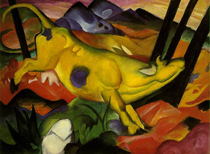
|
|
| [ ] |
Joy of Nature |
| [ ] |
Bucking Bull |
| [ ] |
The Yellow Cow |
| [ ] |
Happy Heifer |
|
|
|
8.
|
This painting in the Guggenheim New York is by the Dutch artist Theo van Doesburg. Van Doesburg is perhaps most famous for founding the artistic movement De Stijl. What does De Stijl mean in English? 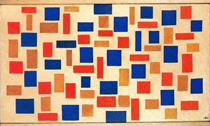
|
|
| [ ] |
Fence |
| [ ] |
Style |
| [ ] |
Gate |
| [ ] |
Door |
|
|
|
9.
|
In 1998 the surfaces inside the rotunda of the New York Guggenheim Museum were covered with polished stainless steel as a backdrop for which exhibition? 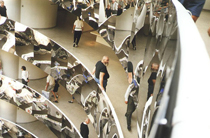
|
|
| [ ] |
The Art of the Kitchen |
| [ ] |
The Art of the Motorcycle |
| [ ] |
The Art of the Mirror |
| [ ] |
The Art of the Future |
|
|
|
10.
|
This 1867 painting The Hermitage at Pontoise is on display at the New York Guggenheim Museum. It was created by which Danish-French Neo-impressionist? 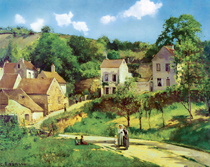
|
|
| [ ] |
Camille Pissarro |
| [ ] |
Pablo Picasso |
| [ ] |
Paul Cézanne |
| [ ] |
Hercule Poirot |
|
|
|
1.
|
On display in the Louvre and dating from Greece around 550 BC, the Rampin Rider is of an unknown figure. Which of the 3 answers below has not been suggested by scholars as its possible identity? 
|
|
| [ ] |
The Greek hero Castor |
| [ ] |
The winner of a race |
| [ ] |
The Greek hero Polydeuces |
| [x] |
King Aegeus of Athens |
|
|
|
2.
|
This is an example of a Fayum portrait, dating back to the first century AD in Roman occupied Egypt. What was the purpose of Fayum portraits? 
|
|
| [ ] |
To mark the birth of a child |
| [ ] |
As a gift for a bride |
| [x] |
To cover the face of a mummy |
| [ ] |
As a curtain for windows |
|
|
|
3.
|
Painted by Anthony van Dyck circa 1635, Le Roi à la chasse shows which English king at the hunt? 
|
|
| [ ] |
James II |
| [ ] |
Charles II |
| [ ] |
James I |
| [x] |
Charles I |
|
|
|
4.
|
The Lacemaker was painted around 1670 by which Dutch artist? 
|
|
| [x] |
Johannes Vermeer |
| [ ] |
Rembrandt |
| [ ] |
Jansz Vermin |
| [ ] |
Salomon Rombouts |
|
|
|
5.
|
Rightly housed in the Louvre in Paris, this painting commemorates the revolution of 1830 which overthrew King Charles X of France. What is its name? 
|
|
| [x] |
Liberty Leading the People |
| [ ] |
The July Revolution |
| [ ] |
Liberty, Equality, Fraternity |
| [ ] |
The Second Revolution |
|
|
|
6.
|
The Guggenheim Museum in Bilbao, Spain, is a work of modern art in itself. It was designed by which Canadian architect? 
|
|
| [ ] |
William Shatner |
| [ ] |
Étienne Gaboury |
| [ ] |
Albert Schultz |
| [x] |
Frank Gehry |
|
|
|
7.
|
Painted by German artist Franz Marc in 1911, what is the name of this expressionist painting? 
|
|
| [ ] |
Joy of Nature |
| [ ] |
Bucking Bull |
| [x] |
The Yellow Cow |
| [ ] |
Happy Heifer |
|
|
|
8.
|
This painting in the Guggenheim New York is by the Dutch artist Theo van Doesburg. Van Doesburg is perhaps most famous for founding the artistic movement De Stijl. What does De Stijl mean in English? 
|
|
| [ ] |
Fence |
| [x] |
Style |
| [ ] |
Gate |
| [ ] |
Door |
|
|
|
9.
|
In 1998 the surfaces inside the rotunda of the New York Guggenheim Museum were covered with polished stainless steel as a backdrop for which exhibition? 
|
|
| [ ] |
The Art of the Kitchen |
| [x] |
The Art of the Motorcycle |
| [ ] |
The Art of the Mirror |
| [ ] |
The Art of the Future |
|
|
|
10.
|
This 1867 painting The Hermitage at Pontoise is on display at the New York Guggenheim Museum. It was created by which Danish-French Neo-impressionist? 
|
|
| [x] |
Camille Pissarro |
| [ ] |
Pablo Picasso |
| [ ] |
Paul Cézanne |
| [ ] |
Hercule Poirot |
|
|











This statue, and many others, were smashed by the Persian army when it sacked Athens in 480 BC. It was not put back together until 1936